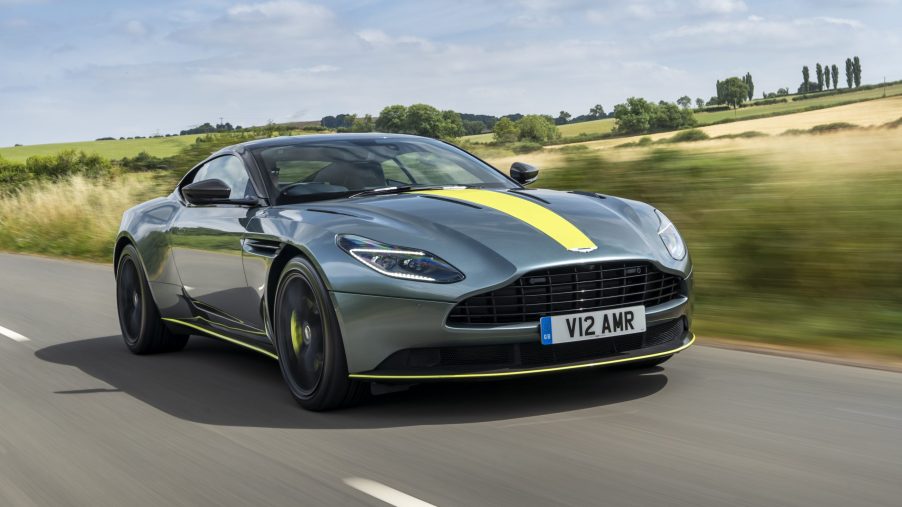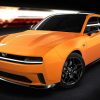
Aston Martin Plans for Big Updates to Its Sports Cars in 2023
Aston Martin, the legendary British sports car maker, and supplier of James Bond’s rides, has announced that significant changes are coming in 2023 for their front-engined sports cars. That will include the Vantage, DB11, and DBS.
Fans of the marque will know that while Aston Martin makes some of the best-looking sports cars on the planet, their technology and mechanicals lag far behind the competition. Speaking to British car magazine Autocar, Aston Martin’s chairman, Lawrence Stroll, revealed some of the changes coming, calling them “all-new cars.”
Let’s look at what the storied British brand is planning and if it is enough to take on rivals Porsche, Ferrari, and Lamborghini.
Premium sports cars with three-year-old technology

Lawrence Stroll, the out-spoken chairman of Aston Martin and owner of the Aston Martin F1 team, sat down with British car magazine Autocar to discuss changes coming in 2023. Stroll first addressed the issue of aging technology, saying, “How can you have an Aston Martin that sells for £150,000 with three-year-old technology? It is a silly thing the previous management agreed to. Finally, Aston Martin gets touchscreens.”
It seems silly to think that a brand-new Aston Martin still relies on three-year-old technology supplied by Mercedes-Benz. The agreement that Stroll refers to is about the deal struck with Mercedes-Benz in 2013. When the two companies partnered, Aston Martin got access to the Mercedes-AMG 4.0-liter twin-turbocharged V8 but could only use technology that had already been used in Mercedes cars for three years. That means that a 2022 Aston Martin uses 2019 Mercedes-Benz components and tech.
The V12 lives on and will partner with an updated V8
The changes and updates coming to Aston Martin are a part of a bigger plan to increase sales of their front-engined sports cars. To do that, the company knows it must keep up with its rivals in the technology and engine department. The goal is to sell 4,000 cars per year.
Stroll confirmed, according to Autocar, that changes are coming to the engine line-up. An updated and current spec version of the Mercedes-AMG 4.0-liter twin-turbocharged V8 will be coming. Mercedes uses that engine in a wide range of cars and states of tune, but expect it to be on the cusp of 600 horsepower when fitted to Aston Martin’s cars.
Stroll also clarified that the 5.2-liter twin-turbocharged V12 isn’t going anywhere. That engine is currently fitted to the DBS sports car and will likely get a few updates to make it competitive with rivals.
What does this mean for Aston Martin, and will it be enough to remain competitive?
The updates to Aston Martin’s front-engined sports cars are long overdue. So is a new deal with Mercedes that ditches the old technology. It may seem like a trivial update, but it does make a huge difference. Your interface with the controls of a car, especially in a high-end sports car, should feel special and state-of-the-art. If the controls, interface, and functionality seem out of date, then the whole experience suffers. That is, after all, what these cars are all about, the experience.
Aston Martin’s cars have never suffered from a lack of horsepower; the current DBS produces 715 of them. What the cars really need are current transmissions and suspension systems. The eight-speed automatic transmission has always felt clunky and slow compared to other sports cars in this league. It feels old, and when you drive one, there is always a sense that you’re driving an old car.
The same is true on the handling front. We could perhaps argue that these are GT cars and not race track devouring, lap time crushing sports cars. However, they could still benefit from a significant update. There is a lack of sophistication to the feel of the cars when driven hard. They are by no means poor handling. The cars just don’t feel crisp, fresh, and sharp when shown a race track or twisty canyon road. This is primarily due to the fact that the same basic suspension and suspension geometry has been used since the DB9 debuted in 2004.
Lawrence Stroll is definitely passionate about the company that he controls. His desire to improve the brand will only benefit the company and its cars. If he is to be successful, and Aston Martin is to become a true rival to Ferrari, Lamborghini, and Porsche, they will need current technology, current engines, and an experience that doesn’t feel several years old.
Related: How Much is a New Aston Martin SUV?


